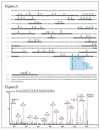Chicken Combs and Wattles as Sources of Bioactive Peptides: Optimization of Hydrolysis, Identification by LC-ESI-MS2 and Bioactivity Assessment
- PMID: 32272799
- PMCID: PMC7181024
- DOI: 10.3390/molecules25071698
Chicken Combs and Wattles as Sources of Bioactive Peptides: Optimization of Hydrolysis, Identification by LC-ESI-MS2 and Bioactivity Assessment
Abstract
The production of bioactive peptides from organic by-waste materials is in line with current trends devoted to guaranteeing environmental protection and a circular economy. The objectives of this study were i) to optimize the conditions for obtaining bioactive hydrolysates from chicken combs and wattles using Alcalase, ii) to identify the resulting peptides using LC-ESI-MS2 and iii) to evaluate their chelating and antioxidant activities. The hydrolysate obtained using a ratio of enzyme to substrate of 5% (w/w) and 240 min of hydrolysis showed excellent Fe2+ chelating and antioxidant capacities, reducing Fe3+ and inhibiting 2, 2'-Azino-bis(3-ethylbenz-thiazoline-6-sulfonic acid) (ABTS) and 2,2-diphenyl-1-picrylhydrazyl (DPPH) radicals. The mapping of ion distribution showed that a high degree of hydrolysis led to the production of peptides with m/z ≤ 400, suggesting low mass peptides or peptides with multiple charge precursor ions. The peptides derived from the proteins of cartilage like Collagen alpha-2(I), Collagen alpha-1(I), Collagen alpha-1(III) and elastin contributed to generation of bioactive compounds. Hydrolysates from chicken waste materials could be regarded as candidates to be used as ingredients to design processed foods with functional properties.
Keywords: LC-ESI-MS2; bioactive compounds; chicken by-products; free radicals; protein hydrolysate.
Conflict of interest statement
The authors declare no conflict of interest.
Figures






References
-
- Borrajo P., Pateiro M., Barba F.J., Mora L., Franco D., Toldrá F., Lorenzo J.M. Antioxidant and Antimicrobial Activity of Peptides Extracted from Meat By-products: A Review. Food Anal. Meth. 2019;12:2401–2415. doi: 10.1007/s12161-019-01595-4. - DOI
-
- Rosa C.S., Hoelzel S.C., Viera V.B., Barreto M., Beirão L.H. Atividade antioxidante do ácido hialurônico extraído da crista de frango. Ciênc Rural. 2008;38:2593–2598. doi: 10.1590/S0103-84782008000900029. - DOI
-
- Mora L., Toldrá F. Proteomic identification of small (<2000 Da) myoglobin peptides generated in dry-cured ham. Food Technol. Biotechnol. 2012;50:343–349.
-
- Mora L., Reig M., Toldrá F. Bioactive peptides generated from meat industry by-products. Food Res. Int. 2014;65:344–349. doi: 10.1016/j.foodres.2014.09.014. - DOI
MeSH terms
Substances
LinkOut - more resources
Full Text Sources
Miscellaneous

